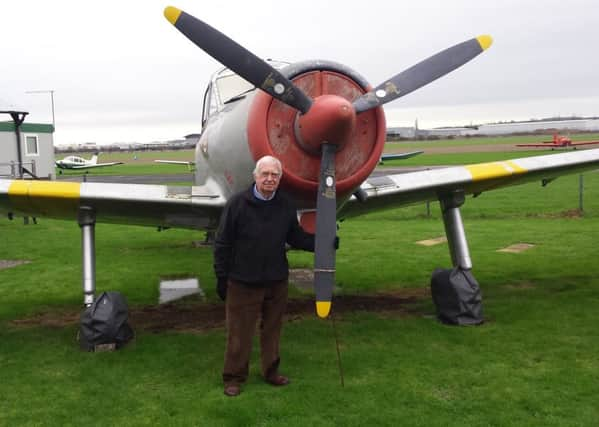Wellesbourne Airfield Museum is under threat


Wellesbourne Wartime Museum exhibits static aircraft and artefacts including medals belonging to crew members who lost their lives during active service.
The volunteer-run attraction has been part of Wellesbourne Mountford Airfield for more than 30 years but its future is now unknown after business on the site were told leases would not be renewed after December 2016.
Advertisement
Hide AdAdvertisement
Hide AdThe museum honours the men of 22 Operational Training Unit, which consisted of mainly Commonwealth servicemen stationed there when it belonged to the RAF.
A Vulcan bomber, which is maintained by volunteers, occupies another corner of the site and has been restored to the point where it can taxi along the runway.
Volunteer Derek Powell, from Kings Heath said: “We don’t know what’s going to happen. The site may be bought and used for development but we are uncertain as to what the future may bring.
“We are keeping our fingers crossed that whatever happens we will be allowed to stay here.
Advertisement
Hide AdAdvertisement
Hide Ad“The understanding is of course that all of the businesses who depend on the airfield for their livelihoods will have to go if it does close down.
“So while for us it is an interesting hobby for them it is about their jobs.
“There are no guarantees for anyone but the family who own the site have been extremely good to us over the years. We are just going to carry on as if nothing’s going to happen.”
Unlike businesses on the site the museum does not have a lease but operates on a grace-and-favour agreement with the Littler family, who own the land.
Advertisement
Hide AdAdvertisement
Hide AdIn the worst-case scenario the volunteers have a constitution detailing how exhibits and funds would be dissolved in the event of closure.
However they are continuing to refurbish a flooded bunker, which operated as an emergency command shelter during the war, and hope to re-open it to the public by March.
The museum honours British and Commonwealth crew members, including rookie pilots, navigators, wireless operators and air gunners, who lost their lives while stationed at the base.
Among them were five young Canadians whose Wellington bomber plunged into the banks of the River Avon as they returned from a night-time exercise in 1942. The youngest was just 20.
Advertisement
Hide AdAdvertisement
Hide AdDuring the war Wellesbourne lost 96 Wellingtons on operations and training accidents, with 315 airmen killed and 80 injured, the majority of them Canadians.
Mr Powell, a retired RAF electronics engineer, said: “The museum has been run by volunteers since the word go.
“We are happy to put our time in because we want to preserve the memory of what happened here.
“An awful lot of young people, Canadians, Australians, New Zealanders, came over and many of them are resting in Stratford Cemetery.
Advertisement
Hide AdAdvertisement
Hide Ad“They did a short course flying planes that had been built very quickly flying round a country that was blacked out with no navigation aids. It was a very dangerous occupation even in the training phase.
“There are aircraft from here dotted all over the Highlands in Scotland and a number simply disappeared into the North Sea due to navigation errors.
“That is the importance of the museum, it’s not about bricks and mortar.”
The museum began life in 1984 with the purchase of a Vampire T11 training aircraft and the exhibits now include an RAF Percival Provost, a Soviet Yak-52 and artefacts including medals donated by relatives of the fallen.
Advertisement
Hide AdAdvertisement
Hide Ad**** Derek Powell started volunteering at the museum after the launch, bringing experience from his time working on V bombers – the UK’s early nuclear strike force.
“To start with there was just a great big patch of brambles and we were based in two caravans by the hangers,” he said.
“We refurbished the bunker, reassembled the Vampire and we have gradually moved on. We’ve never really advertised, the museum has become popular mainly just by word of mouth.
“We raised funds and put thousands of pounds in of our money but it’s become self-financing with admission fees.
Advertisement
Hide AdAdvertisement
Hide Ad“Though there are only five of us and we are getting a bit long in the tooth we hope to keep it going.”
Robert Black, of Gladman, said: “Wellesbourne Airfield is a previously developed site and can deliver a significant number of much needed new homes in addition to new jobs and a broad range of community and educational facilities in an established sustainable location.”
The Ministry of Defence requisitioned the land from the Littlers in 1940 before selling it back to the family in 1965.